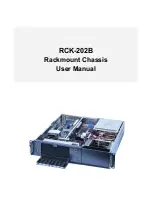
1-68
Cisco ASA Series CLI Configuration Guide
Chapter 1 Configuring Connection Profiles, Group Policies, and Users
Group Policies
To prevent inheriting an idle timeout value, enter the
user-authentication-idle-timeout
command with
the
none
keyword. This command sets the idle timeout with a null value, which disallows an idle timeout
and prevents inheriting an user authentication idle timeout value from a default or specified group policy.
The following example shows how to set an idle timeout value of 45 minutes for the group policy named
FirstGroup:
hostname(config)#
group-policy FirstGroup attributes
hostname(config-group-policy)#
user-authentication-idle-timeout 45
Configuring IP Phone Bypass
You can allow Cisco IP phones to bypass individual user authentication behind a hardware client. To
enable IP Phone Bypass, enter the
ip-phone-bypass
command with the
enable
keyword in group-policy
configuration mode. IP Phone Bypass lets IP phones behind hardware clients connect without
undergoing user authentication processes. IP Phone Bypass is disabled by default. If enabled, secure unit
authentication remains in effect.
To disable IP Phone Bypass, enter the
disable
keyword. To remove the IP phone Bypass attribute from
the running configuration, enter the
no
form of this command. This option allows inheritance of a value
for IP Phone Bypass from another group policy:
hostname(config-group-policy)#
ip-phone-bypass
{
enable
|
disable
}
hostname(config-group-policy)#
no ip-phone-bypass
Note
You must configure mac-exempt to exempt the clients from authentication. Refer to the
“Configuring Device Pass-Through” section on page 74-8
for more information.
Configuring LEAP Bypass
When LEAP Bypass is enabled, LEAP packets from wireless devices behind a VPN 3002 hardware
client travel across a VPN tunnel prior to user authentication. This action lets workstations using Cisco
wireless access point devices establish LEAP authentication and then authenticate again per user
authentication. LEAP Bypass is disabled by default.
To allow LEAP packets from Cisco wireless access points to bypass individual users authentication,
enter the
leap-bypass
command with the
enable
keyword in group-policy configuration mode. To
disable LEAP Bypass, enter the
disable
keyword. To remove the LEAP Bypass attribute from the
running configuration, enter the
no
form of this command. This option allows inheritance of a value for
LEAP Bypass from another group policy:
hostname(config-group-policy)#
leap-bypass
{
enable
|
disable
}
hostname(config-group-policy)#
no leap-bypass
Note
IEEE 802.1X is a standard for authentication on wired and wireless networks. It provides wireless LANs
with strong mutual authentication between clients and authentication servers, which can provide
dynamic per-user, per session wireless encryption privacy (WEP) keys, removing administrative burdens
and security issues that are present with static WEP keys.
Cisco Systems has developed an 802.1X wireless authentication type called Cisco LEAP. LEAP
(Lightweight Extensible Authentication Protocol) implements mutual authentication between a wireless
client on one side of a connection and a RADIUS server on the other side. The credentials used for
authentication, including a password, are always encrypted before they are transmitted over the wireless
medium.
Summary of Contents for 5505 - ASA Firewall Edition Bundle
Page 28: ...Glossary GL 24 Cisco ASA Series CLI Configuration Guide ...
Page 61: ...P A R T 1 Getting Started with the ASA ...
Page 62: ......
Page 219: ...P A R T 2 Configuring High Availability and Scalability ...
Page 220: ......
Page 403: ...P A R T 2 Configuring Interfaces ...
Page 404: ......
Page 499: ...P A R T 2 Configuring Basic Settings ...
Page 500: ......
Page 533: ...P A R T 2 Configuring Objects and Access Lists ...
Page 534: ......
Page 601: ...P A R T 2 Configuring IP Routing ...
Page 602: ......
Page 745: ...P A R T 2 Configuring Network Address Translation ...
Page 746: ......
Page 845: ...P A R T 2 Configuring AAA Servers and the Local Database ...
Page 846: ......
Page 981: ...P A R T 2 Configuring Access Control ...
Page 982: ......
Page 1061: ...P A R T 2 Configuring Service Policies Using the Modular Policy Framework ...
Page 1062: ......
Page 1093: ...P A R T 2 Configuring Application Inspection ...
Page 1094: ......
Page 1191: ...P A R T 2 Configuring Unified Communications ...
Page 1192: ......
Page 1333: ...P A R T 2 Configuring Connection Settings and QoS ...
Page 1334: ......
Page 1379: ...P A R T 2 Configuring Advanced Network Protection ...
Page 1380: ......
Page 1475: ...P A R T 2 Configuring Modules ...
Page 1476: ......
Page 1549: ...P A R T 2 Configuring VPN ...
Page 1550: ......
Page 1965: ...P A R T 2 Configuring Logging SNMP and Smart Call Home ...
Page 1966: ......
Page 2059: ...P A R T 2 System Administration ...
Page 2060: ......
Page 2098: ...1 8 Cisco ASA Series CLI Configuration Guide Chapter 1 Troubleshooting Viewing the Coredump ...
Page 2099: ...P A R T 2 Reference ...
Page 2100: ......







































